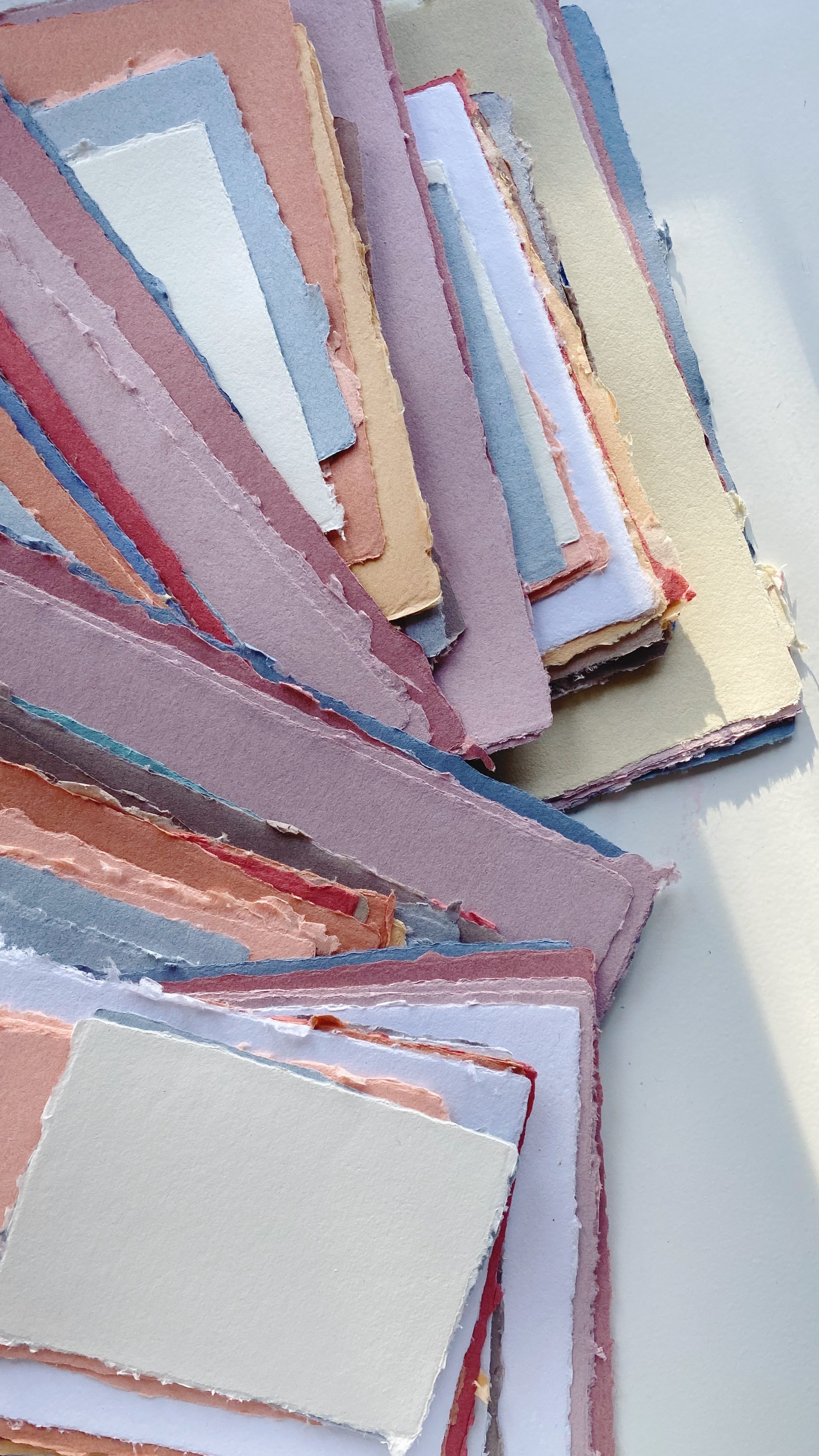Papermaking 101
Maker Steph Bezzano of Pots and Paper by Steph shares what you need to know to make your own paper!
1. The tool used to form a sheet is called a mould and deckle. The mould is made of a mesh surface stretched over a frame and this is where the pulp is collected and drained to form the new sheet. The deckle is the top frame that sits atop the mould and that traps the pulp. Its size and shape determines the shape and thickness of the final paper sheet.
2. There are two types of handmade paper techniques – Western (the one I practice) and Eastern. The Western mould and deckles can have a laid or woven screen surface and are usually made with an aluminum mesh/screen. The Eastern papermaking tool is known as a Sugata and is a flexible screen held taut in a hinged frame.
3. Your newly formed sheet needs to be transferred from your mould to your material where it can be pressed. The process of transferring your newly formed wet sheet from your mould onto your material is known as ‘couching’ and your final handmade paper sheets will feature the texture of your couching material.
4. You can make paper from almost anything – from recycled paper and plant fibres, to cotton and linen scraps.
5. When done properly, the papermaking process takes longer than people might realise and you can’t rush it – it can take me five to six days to go from shredded paper to dry, pressed paper sheets.
The papermaking process
1. To make a sheet of handmade paper from recycled materials, the waste paper must first be shredded and soaked in water overnight to soften.
2. The wet shredding is then blended with water to form a pulp and colour is added here if desired.
3. The pulp is then added to a vat of water and a mould and deckle is used to pull the sheet.
4. The mould and deckle frame is submerged into the vat and lifted out swiftly, with the pulp from the vat getting trapped on the mesh of the mould – this is your new handmade paper sheet!
5. This is then left on a flat surface to drain. This drained sheet is then transferred (‘couched’) onto some fabric, pressed to remove all the excess water and dried to reveal your new handmade paper sheet.


